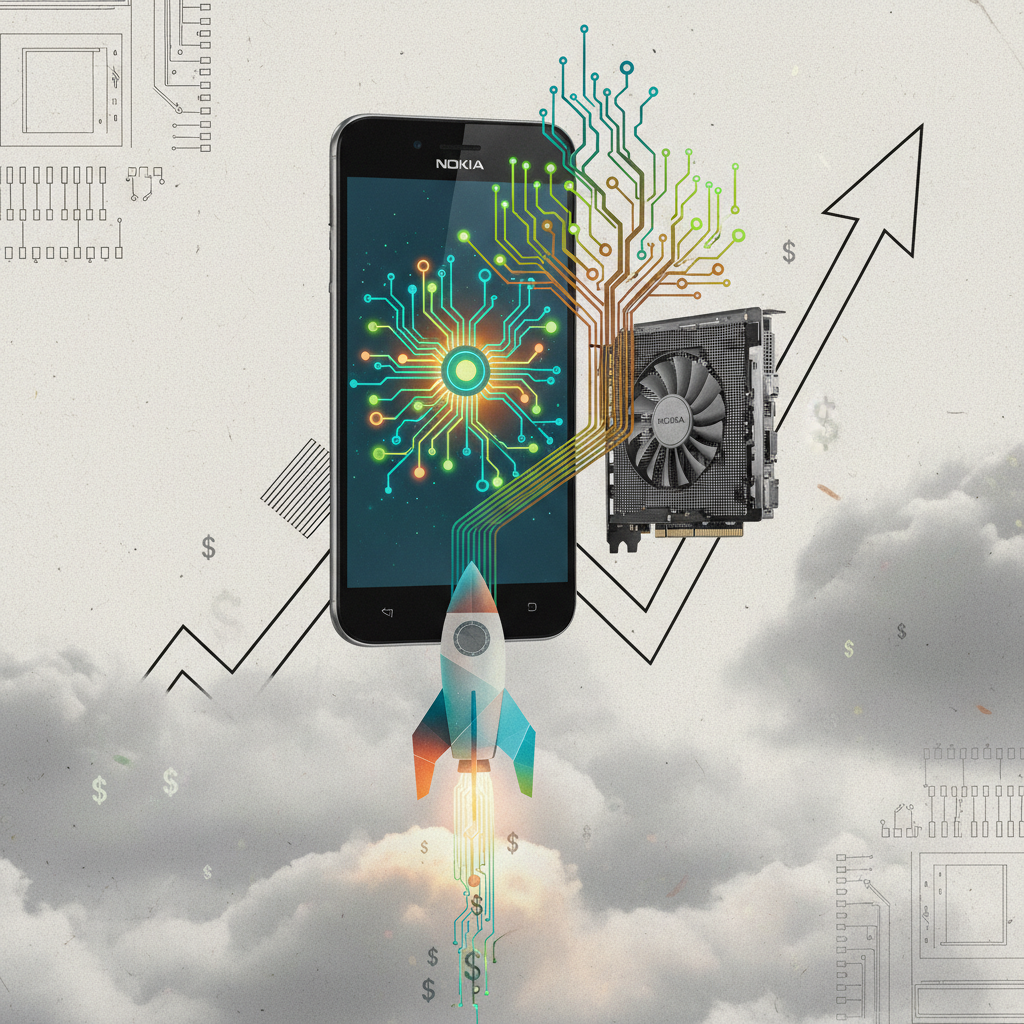When Nvidia poured a billion into AI, Nokia’s stock spiked to a decade high here’s why that matters for investors and the future of tech
When Nvidia announced a $1 billion AI partnership, most eyes zeroed in on the headline‑grabbing chipmaker. Yet, the ripple that lifted Nokia to its highest share price in a decade is a story many investors still miss. Why does a move by a graphics‑processing‑giant suddenly matter to a telecommunications veteran? Because the real question isn’t just “who’s spending the money,” but “what hidden value chains are being reshaped when AI moves from the lab to the network.”
The common narrative paints AI as a siloed revolution for data centers and autonomous cars, leaving the rest of the tech ecosystem in the shadows. That’s the blind spot we’ll explore: how AI‑driven demand for 5G, edge computing, and robust connectivity is reviving legacy players that once seemed past their prime. It’s not about nostalgia; it’s about recognizing that the infrastructure that carries AI workloads—antennas, radios, and the very fabric of the internet—needs partners who already own the global reach.
I’ve watched a few cycles of hype and disappointment in tech, and the pattern is clear: the winners are often those who quietly align their existing strengths with the next wave, rather than those who chase it head‑on. Nokia’s resurgence isn’t a lucky flare; it’s the logical outcome of a strategic pivot that many overlooked.
If you’ve ever felt the market’s buzz was speaking a language you didn’t understand, this is the moment where the puzzle pieces start to click. Let’s unpack this.
The invisible hand: why AI money lifts a telecom veteran
When a chipmaker throws a billion dollars at artificial intelligence, the headline is obvious—Nvidia is buying influence. The less obvious story is how that cash re‑writes the balance sheet of a company that built the world’s phone lines. Nokia owns the antennas, the radios, the global contracts that let data travel from a smartphone to a cloud server. AI workloads need that travel, and they need it fast, reliable, and at scale. Suddenly, every AI model training run, every inference at the edge, becomes a demand driver for the very infrastructure Nokia already sells. The market reacts not to a new product launch, but to the realization that a legacy network provider is now a critical conduit for the next generation of compute. That hidden value chain is why investors watched Nokia’s share price sprint to a ten‑year high—because the AI tide lifts every boat that can keep the water moving.
From 5G towers to AI engines: the new edge economy
Think of AI as a marathon runner who needs water stations every few miles. 5G towers and edge nodes are those stations, refilling the model’s latency budget and bandwidth appetite. When AI moves off the data‑center and onto the edge—think autonomous drones, smart factories, real‑time translation—the latency budget shrinks to milliseconds. That shift forces telecom operators to densify their networks, add more compute at the edge, and upgrade the radio firmware to understand tensor operations. Nokia’s existing 5G portfolio gives it a head start: the same base stations can be upgraded with AI‑accelerated modules, turning a simple antenna into a mini‑data‑center. The result is a virtuous cycle—more AI services demand more edge capacity, which in turn creates new revenue streams for the network owner. The story isn’t about a new gadget; it’s about a re‑engineered ecosystem where connectivity and intelligence are inseparable.
Investing beyond the flash: spotting real value in legacy players
The market loves fireworks, but the steady glow of a well‑positioned legacy firm often goes unnoticed until a catalyst arrives. The key for investors is to look for three signals: (1) a clear roadmap that ties existing assets—like global fiber, spectrum licenses, and RAN equipment—to emerging AI workloads; (2) partnerships that embed the firm’s hardware into AI pipelines, such as joint development agreements with chip makers; and (3) a balance‑sheet that shows the company can fund upgrades without diluting shareholders. Nokia checks those boxes: its 5G rollout is already in place, it now has a $1 billion AI partnership, and its cash flow remains robust. When you see a legacy player aligning its core strengths with the next wave, the upside isn’t a speculative gamble—it’s a logical extension of its moat. In other words, the smartest bet isn’t on the flashiest startup, but on the veteran that quietly rewires its future.
The real question we began with wasn’t who is writing the check, but who is already holding the road the check will travel on. When Nvidia’s billion‑dollar AI pledge hit the headlines, the ripple that lifted Nokia reminded us that every AI model needs a conduit—antennas, radios, fiber—to become useful. The lesson for investors, and for any strategist, is simple: stop chasing the flash of the newest chip and start mapping where the existing infrastructure meets the next wave of compute. Look for companies whose core assets already sit at that intersection, and ask how a partnership or upgrade turns a static piece of hardware into a living edge node. That quiet alignment is the hidden moat that will keep the AI tide moving forward. So, the next time you hear a headline about a billion‑dollar AI bet, ask yourself: whose network will carry that money to the world?


Leave a Reply